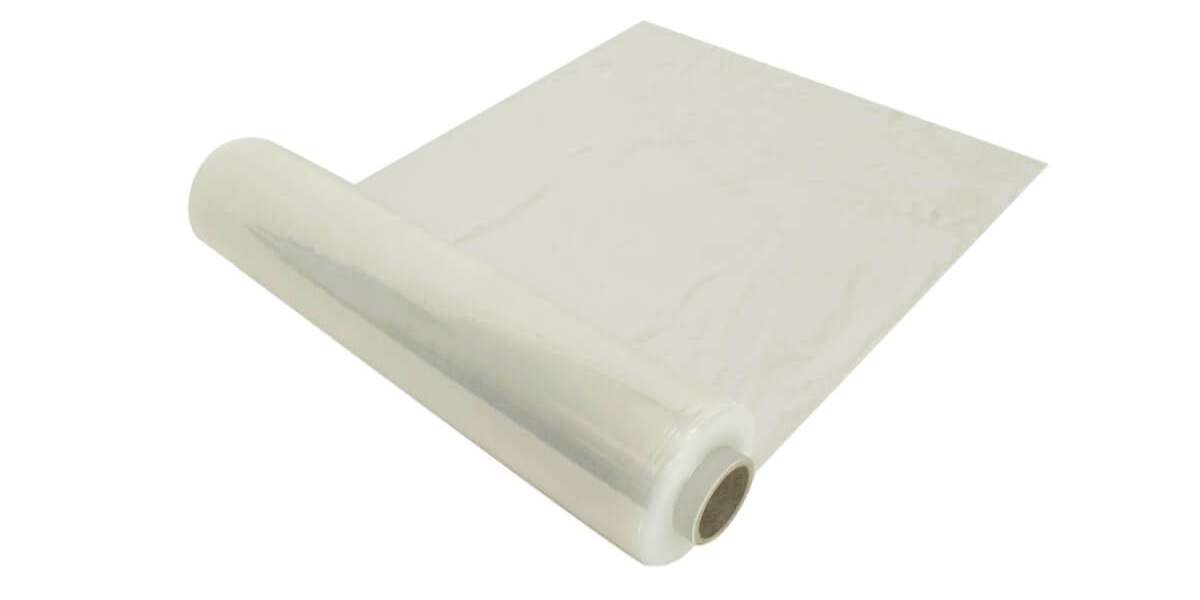Packaging is crucial for any business, but with so many options available, finding an effective and affordable solution can be challenging. One of the most popular and practical business choices today is hand pallet wrap, a versatile material that ensures products remain safe during transportation and storage. But what exactly is hand pallet wrap, and why is it considered a cost-effective solution for packaging?
In this article, we’ll explain everything you need to know about hand pallet wrap, from its uses to its benefits. Whether you’re a business owner looking to optimize your packaging process or simply curious about its functionality, this guide will give you a deeper understanding.
1. What is a Hand Pallet Wrap?
Hand pallet wrap, often called stretch film or stretch wrap, is a thin, stretchable plastic film used to secure products on a pallet. It’s applied manually, and the wrap clings tightly around the goods, creating a stable and protected load.
Unlike other packaging materials, hand pallet wrap is designed to be flexible yet durable. The film stretches to accommodate different shapes and sizes, making it an ideal choice for various industries. Think of it as the "cling film" you use in your kitchen, but much stronger and with a bigger role to play in industrial applications.
2. Types of Hand Pallet Wrap
There are different types of hand pallet wrap available, each suited for specific needs:
Blown Stretch Wrap: This type of wrap is known for its strength and puncture resistance and is commonly used for heavy or irregularly shaped loads.
Cast Stretch Wrap: Smoother and quieter when applied, cast stretch wrap is transparent and easier to work with, though it may not be as strong as blown stretch wrap.
Pre-Stretched Film: This wrap has already been stretched, making it easier to apply and saving effort while ensuring consistent tension.
3. How Does Hand Pallet Wrap Work?
The hand pallet wrap is applied manually by wrapping the film around the goods placed on a pallet. As you stretch the film and apply it tightly, it sticks to itself, creating a secure seal. The wrap's elasticity allows it to hold items in place, preventing movement during transportation.
Much like a rubber band holding a bundle of pens, the hand pallet wrap clings to itself, creating a cohesive, secure bundle of goods.
4. Benefits of Hand Pallet Wrap
Why should you consider hand pallet wrap over other packaging solutions? Here are some key benefits:
Protection: It protects products from dirt, moisture, and other environmental factors.
Stability: Goods are held firmly in place, reducing the risk of shifting during transport.
Versatility: Can be used for a wide range of products, from light to heavy loads.
Cost-Efficient: It’s generally more affordable than alternatives such as strapping or shrink wrap.
5. Cost-Effective Nature of Hand Pallet Wrap
Regarding packaging, businesses always look for ways to reduce costs without sacrificing quality. Hand pallet wrap is a budget-friendly solution because it uses less material than many other packaging methods, yet it delivers excellent protection.
Hand pallet wrap minimizes financial losses for businesses by reducing the amount of damaged goods during transit and storage. Furthermore, the material itself is relatively inexpensive, making it accessible for companies of all sizes.
6. Common Uses of Hand Pallet Wrap
Hand pallet wrap is used across various industries, including:
Manufacturing: To secure large machinery parts or other bulky items.
Retail: For packaging goods in warehouses or distribution centers.
Food and Beverage: To ensure hygiene and freshness during transport.
Logistics: To safeguard shipments and prevent tampering.
Hand pallet wrap provides a reliable way to bundle and protect goods from small boxes to large industrial equipment.
7. How to Choose the Right Pallet Wrap?
Not all hand pallet wrap is created equal. Choosing the right type depends on several factors:
Weight and Size of the Load: Heavier or irregularly shaped items may require blown stretch wrap for extra strength.
Environmental Conditions: If your goods will be exposed to extreme temperatures or moisture, select a wrap that offers the necessary protection.
Stretchability: The amount of stretch in the film can impact how well it holds the load in place.
8. Environmental Impact of Pallet Wrap
With the increasing focus on sustainability, businesses are becoming more conscious of the environmental impact of their packaging choices. Traditional hand pallet wraps are made from plastic, which can contribute to environmental issues if disposed of improperly.
However, many companies are now turning to biodegradable and recyclable pallet wrap options, which help reduce waste and minimize the environmental footprint. By choosing eco-friendly alternatives, businesses can make a positive impact while still reaping the benefits of hand pallet wrap.
9. Tips for Efficient Use of Hand Pallet Wrap
To get the most out of your hand pallet wrap, follow these tips:
Stretch it Properly: Make sure you’re applying enough tension to secure the goods without over-stretching the wrap.
Use Multiple Layers: For added protection, apply multiple layers of the wrap, especially for heavy or irregularly shaped items.
Store Correctly: Keep the wrap in a cool, dry place to prevent it from becoming brittle or losing its stretchability.
10. Alternatives to Hand Pallet Wrap
While hand pallet wrap is a popular option, there are other packaging materials you might consider:
Shrink Wrap: This involves heat-shrinking plastic film to secure the load. It offers a tight fit but requires special equipment.
Strapping: Metal or plastic bands hold items together. This method is often used for very heavy or large loads.
Pallet Covers: These are pre-formed plastic covers that fit over the pallet, providing additional protection.
Each option has its pros and cons, depending on your packaging needs.
11. The Future of Packaging Solutions
As technology advances and the focus on sustainability increases, the packaging industry is constantly evolving. We can expect to see more eco-friendly materials and automation in the way we package and secure goods.
Hand pallet wrap may continue to play a crucial role, but innovations like recyclable wraps and automated pallet wrapping machines are likely to become more common in the future.
12. Conclusion
Hand pallet wrap is an efficient, cost-effective solution for packaging that offers protection, stability, and versatility. Its affordability makes it an excellent choice for businesses optimising their packaging process. Whether you’re dealing with lightweight or heavy-duty loads, hand pallet wrap can meet various needs while keeping your products safe.
13. FAQs
1. What is the difference between blown and cast pallet wrap?
The blown wrap is stronger and more resistant to punctures, while the cast wrap is smoother, quieter, and easier to apply.
2. Can hand pallet wrap be recycled?
Yes, many types of pallet wrap are recyclable, though it depends on the material. Look for eco-friendly or recyclable options.
3. How much pallet wrap do I need?
The amount of wrap needed depends on the size and weight of your load. Heavier loads require more wrap or stronger types like blown stretch film.
4. Is hand pallet wrap suitable for food packaging?
Yes, hand pallet wrap is commonly used in the food industry to keep products fresh and protected during transportation.
5. Can I use hand pallet wrap in extreme temperatures?
Certain types of pallet wrap are designed for extreme conditions. Choose a material that can withstand the specific temperatures your goods will encounter.








